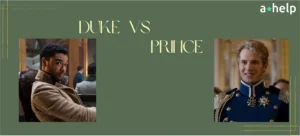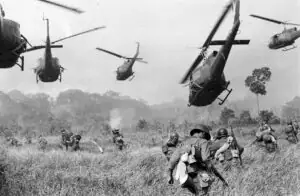The film industry aims to captivate and entertain audiences, transcending individual tastes in style or genre. Yet, there’s an undeniable allure to movies based on true events. Filmmakers sometimes achieve remarkable accuracy in portraying these stories, while at other times, they use historical settings as backdrops for fictional tales. Occasionally, the past serves as a muse, blending reality with imagination in fascinating ways.

✅ AI Essay Writer ✅ AI Detector ✅ Plagchecker ✅ Paraphraser
✅ Summarizer ✅ Citation Generator
Where does “Gangs of New York” belong? If you’re into movies that mix a bit of truth with a dash of Hollywood flair, then Martin Scorsese’s 2002 film might have caught your eye. Set in the rough and tumble streets of mid-19th century New York City, this movie throws us into the middle of a brutal battle between rival gangs in the notorious Five Points neighborhood. But if you’re an advocate of historical accuracy, here’s one important question: how much of this tale is actually true?
The film’s got drama, it’s got action, and it definitely doesn’t skimp on the intensity. But as we brush off the layers of cinematic drama, what’s left? Are these characters and their bloody brawls grounded in reality, or are they just products of some screenwriter’s vivid imagination? Let’s break it down and see where fact meets fiction in “Gangs of New York.”

Real-Life Characters vs. Movie Portrayals
Dive into the heart of New York’s grittiest era with “Gangs of New York,” and you’ll meet characters who feel larger than life—because some of them are. Let’s break down how these movie personas stack up against their real-life inspirations.
Bill the Butcher: A character who steals the show, Bill the Butcher is a fierce, magnetic antagonist, portrayed with captivating intensity by Daniel Day-Lewis. He’s based on William Poole, a real-life figure from the 1850s. The real Bill was indeed a butcher by trade and a notorious member of the Bowery Boys, a nativist gang. Like his cinematic counterpart, he was known for his fierce anti-immigrant stance and his involvement in various street brawls. However, the real Poole was less of a gang leader and more of a political enforcer and prizefighter. His death in 1855, well before the Draft Riots depicted in the film, also differs from the movie’s timeline, where he’s alive to face these events.
Amsterdam Vallon: This character, played by Leonardo DiCaprio, is where fiction takes the reins more firmly. Amsterdam is a composite character designed to represent the young Irish-American experience in the Five Points. His quest for revenge against Bill the Butcher drives the film’s narrative, embodying the conflict between nativist Americans and Irish immigrants. Although there’s no historical Amsterdam Vallon, his character can portray the collective struggles and aspirations of many immigrants during that era.
Jenny Everdeane, played by Cameron Diaz, is another fictional creation. She’s portrayed as a savvy pickpocket and love interest to Amsterdam, illustrating the limited roles available to women in the criminal underworld of the time. While Jenny herself isn’t based on a specific real person, her character type is not uncommon in historical accounts of the Five Points, where women often had to rely on cunning and crime to survive.
Boss Tweed: Unlike many characters in the film, Boss Tweed, played by Jim Broadbent, did actually exist. William M. Tweed was the powerful leader of Tammany Hall, the Democratic Party political machine in New York. The film accurately captures his use of political influence and corruption to control the city, though it simplifies and dramatizes his interactions with the gangs. In reality, Tweed’s manipulation of the city’s dark side was more about political gain than direct involvement.

Key Historical Events Featured in the Film
“Gangs of New York” tells a story of personal revenge and rivalry and sets its narrative against a background of meaningful historical events that shaped the city. These events are integral to the story’s progression and the characters’ development.
New York Draft Riots of 1863: This event is perhaps the most crucial historical scene in the film. The Draft Riots were indeed a dark and violent chapter in New York’s history, triggered by the implementation of the enlistment law during the American Civil War. As depicted in the film, these riots were fueled by the working class, especially Irish immigrants who were infuriated by the $300 commutation fee that allowed the wealthy to escape the draft. The film captures the chaos and violence of these days with visceral realism, showcasing the riots as a clash of class and racial tensions, which it indeed was. African Americans were unjustly targeted, resulting in lynching and massive destruction throughout the city, aspects the film portrays with stark brutality.
Tammany Hall and Political Corruption: While not a single event, the influence of Tammany Hall is a constant undercurrent throughout the film. Under the leadership of Boss Tweed, portrayed in the movie, Tammany Hall was the center of New York City’s Democratic political machine, known for its deep corruption and manipulation. The film touches on how Tammany Hall exploited the city’s underprivileged and immigrant populations, using gangs as muscle to control elections and maintain power. This depiction, though simplified, reflects the real-life symbiosis between politics and the criminal underworld during that era.
The Civil War’s Impact on New York City: The ongoing Civil War is a setting that influences much of the film’s plot, though it’s not always at the forefront of the plot line. The war was a source of tension and division in New York, a city with strong economic ties to the South and a large immigrant population that often felt the brunt of wartime policies. The film subtly integrates this broader conflict, showing how national turmoil deepened local strife and shaped the city’s destiny.
The Great Fire of 1835: Briefly referenced in the movie, the Great Fire of 1835 was one of the most devastating disasters in New York’s history, though it occurred decades before the main events of the film. While its inclusion in the film is more a historical nod rather than a plot device, it symbolizes the constant rebirth and struggle of the city against adversity. The reference helps set the stage for the Five Points as a place that had been literally and metaphorically built from ashes, shaping its residents’ tough, resilient nature.

In essence, filmmaking is an art form that inherently involves imagination and creativity, regardless of genre specifics. “Gangs of New York” is a feature film that draws inspiration from historical events. As such, Martin Scorsese’s creation should not be taken as a reliable source for historical study or test preparation. For accurate historical information, documentaries are more suitable. However, if you’re looking to get a sense of what life might have felt like for an average New Yorker in the mid-19th century, and to experience the era’s challenges and ambiance, this film serves that purpose well.
FAQ
Follow us on Reddit for more insights and updates.





Comments (0)
Welcome to A*Help comments!
We’re all about debate and discussion at A*Help.
We value the diverse opinions of users, so you may find points of view that you don’t agree with. And that’s cool. However, there are certain things we’re not OK with: attempts to manipulate our data in any way, for example, or the posting of discriminative, offensive, hateful, or disparaging material.